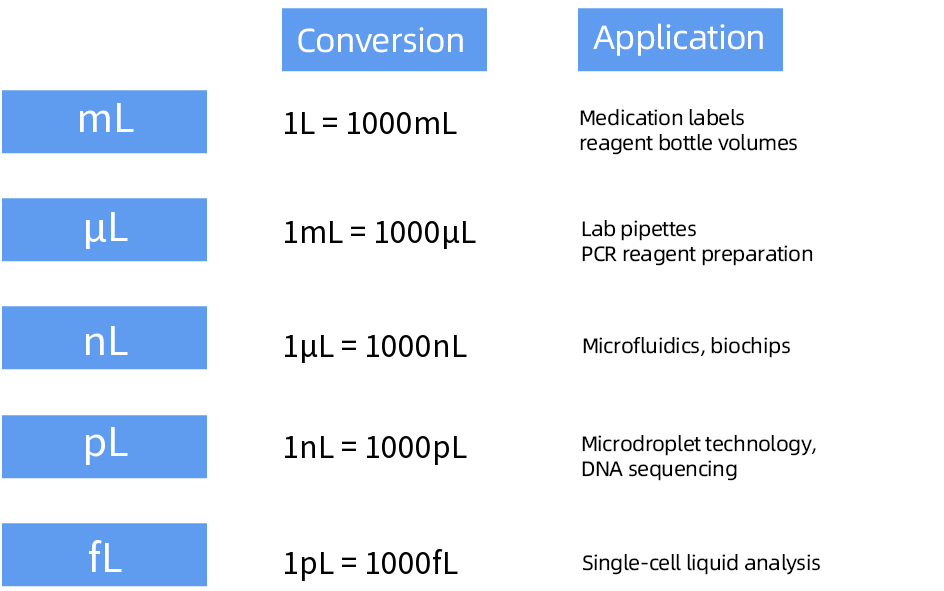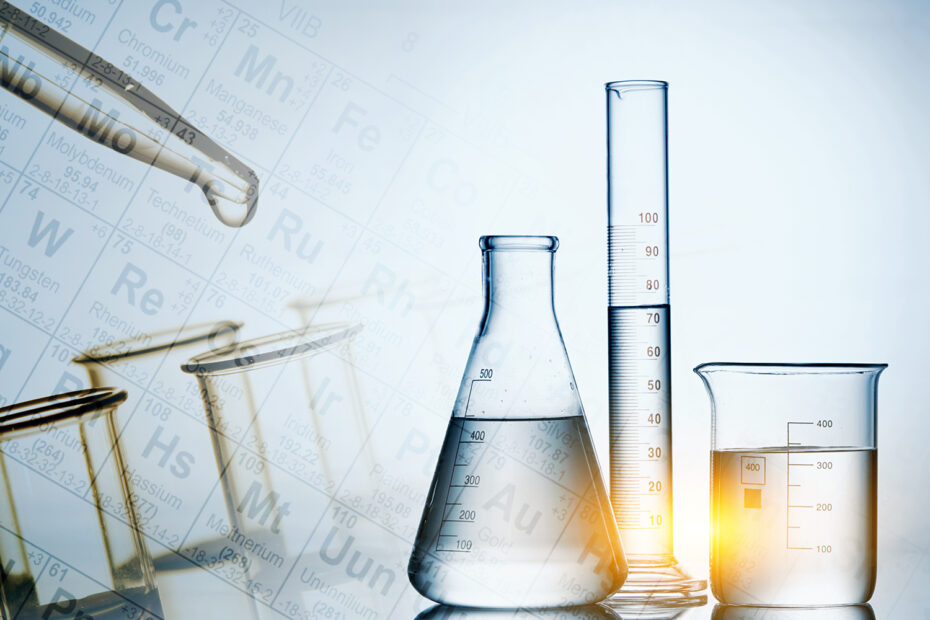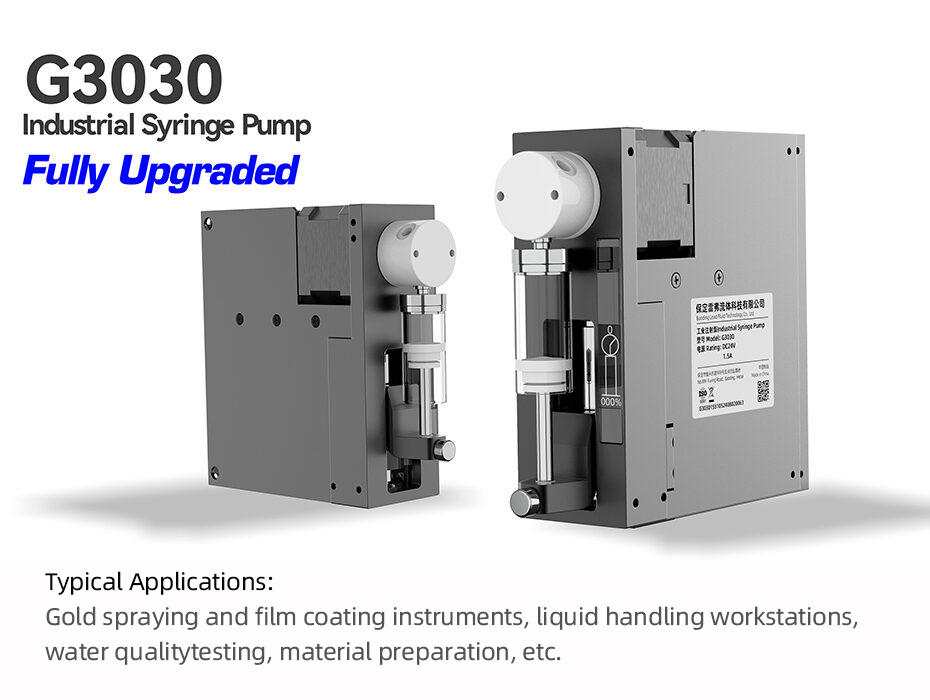We may encounter “mL” and “L” every day,
but have we ever truly considered:
How much is a liter of water?
In experiments, terms like “μL,” “nL,” “pL,” and “fL” are often mentioned—but how small are they really?
Today, let’s step into the world of fluids and explore the units we can “see” and those we “can’t see”!
01 How Big Is a Liter?
The most commonly used unit for liquids is the liter (L). For example, we often say, “Drink at least two liters of water a day,” and a bottle of mineral water is typically 500 mL.
Conversion Relationships
1 liter (L) = 1000 milliliters (mL)
Everyday References
A bottle of water (500 mL) = half a liter
A bowl of soup ≈ 300 mL
An intravenous drip ≈ 250–500 mL
02 Going Smaller: Milliliters, Microliters, Nanoliters…
In laboratories or medical settings, we often encounter units smaller than “mL”:

(*Note: Smaller units will not be discussed here.)
03 The “Family Tree” of the Liter
1 L (liter)
= 1000 mL (milliliters)
= 1,000,000 μL (microliters)
= 1,000,000,000 nL (nanoliters)
= 1,000,000,000,000 pL (picoliters)
= 1,000,000,000,000,000 fL (femtoliters)
Remember one core principle: Each step down multiplies by 1000!
04 Examples

(*Note: The above analogies are for illustrative purposes; actual sizes may vary.)
05 Why Care About “Invisible” Tiny Units?
From microliters to femtoliters, these “invisible” units are driving technological revolutions: from detecting cancer in a drop of blood to treating diseases with nanorobots. Their value lies not in their size but in humanity’s growing mastery of the microscopic world. Each order of magnitude represents a qualitative leap in technology: earlier disease detection, more precise gene editing, and pushing the limits of physics at smaller scales. When science breaks through to the “uselessly” small, it often unlocks world-changing breakthroughs.
In research, medicine, and advanced manufacturing, the smaller the volume, the greater the demand for precision in technology and equipment.
06 How Lead Fluid Products “Master” Microscopic Units
Lead Fluid’s peristaltic pumps, syringe pumps, and other microfluidic control devices are designed for precise fluid transfer in laboratory and industrial settings. They are widely used in cell research, vaccine preparation, microfluidics, and more:
WSP3000 Micro Peristaltic Pump
Precision control down to 1 μL enables efficient and accurate vaccine dosing!
TYS01-02 Dual-Rate Syringe Pump

On a SIM-card-sized chip, nanoliter-scale liquids can be guided through “mazes,” ideal for microfluidic experiments.
G3030 Industrial Micro Syringe Pump
The core advantages of these devices are precision, stability, and controllability.
(For detailed technical specifications, contact a Lead Fluid sales manager.)
07 Small Units, Big Knowledge
Whether you’ re a researcher, equipment operator, or a tech-curious “knowledge seeker,” understanding these units will help you better operate equipment, refine techniques, and stay at the forefront of technology.


